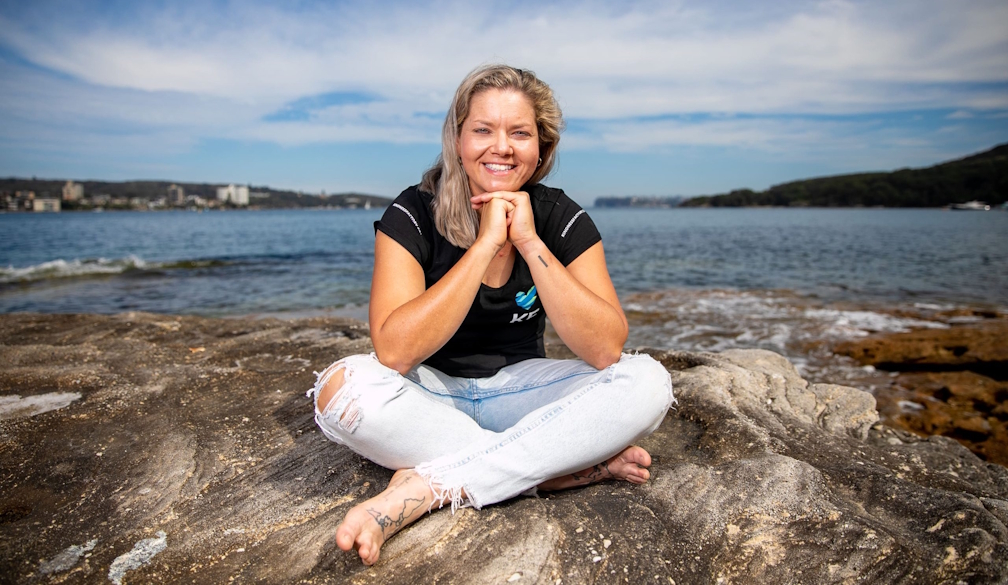why ambitious 'no nonsense' plans are vital to limit global heating to 2℃
- Written by Christian Turney, Pro Vice-Chancellor of Research, University of Technology Sydney
2023 is proving to be a year of climate and weather extremes. Record-busting global air and ocean temperatures[1], unprecedented low levels of Antarctic sea ice[2], and devastating fires[3] and floods[4] have been reported across the world.
Less discussed by the world media is the continuing rise in atmospheric greenhouse gases driving these changes. Carbon dioxide (CO₂) is at a level[5] not seen since the hothouse world of the Pliocene[6], 3 million years ago. On top of that, an El Niño event is now likely[7], so widespread extreme events may intensify in coming months[8].
Despite the changes we are seeing, global efforts to cut emissions fall well short[9] of what’s needed to keep heating to less than 2℃, let alone the more ambitious Paris Agreement target of 1.5℃. This creates an urgent need for the purposeful removal of atmospheric CO₂ as well as cuts in emissions.
In a recent article in Nature[10], we argue for a different approach to pricing carbon. It should take into account how it is removed from the atmosphere, for how long, and with what confidence. This will help fund the most promising technologies for reaching net-zero carbon emissions by 2050.
Read more: Devastatingly low Antarctic sea ice may be the ‘new abnormal', study warns[11]
Carbon removal is on the agenda
The United Nations hosted a “no-nonsense” Climate Ambition Summit[12] in New York this week with the aim of accelerating the global transition away from carbon. This must be done to avoid breaching 2℃ of global heating relative to the pre-industrial era.
Two strategies are being pursued:
- carbon emission reductions
- carbon dioxide removal (CDR), also called “negative emissions”.
At COP26[13] in 2021, global resolutions on cutting emissions drove the push for “net zero[14]” across nations, cities and sectors. However, some worldwide activities, including aviation and heavy industry, face challenges eliminating emissions. Carbon credits have become the main way to offset their remaining emissions.
The dilemma lies in the nature of carbon credits. Most are allocated for so-called “avoidance” measures. A prime example is not clearing forest, which has come under intense scrutiny[15].
And these measures do nothing about the existing excess carbon dioxide.
Read more: 'Worthless' forest carbon offsets risk exacerbating climate change[16]
A big change in our thinking is needed. The emphasis must shift from emission “avoidance” to “removal” offsets that actively pull carbon from the atmosphere. So how do we tackle the monumental challenge of reducing atmospheric CO₂?
What’s needed is a shift from avoidance to verifiable carbon dioxide removal[17]. Almost all current removal efforts come from traditional land management. Less than 1% comes from innovative removal technologies.
Removal technologies include:
A major advance at COP26 was to work out the projected demand and market trajectory for carbon offsets. Offset credits play a vital role in advancing CO₂ removal technologies and developing carbon markets.
Another key goal was to formulate a carbon trading rulebook. The resulting Taskforce on Scaling Voluntary Carbon Markets[18] predicts demand for carbon offsets will grow tenfold by 2030 and 50-fold by 2050.
Read more: Stripping carbon from the atmosphere might be needed to avoid dangerous warming – but it remains a deeply uncertain prospect[19]
So what are the obstacles?
We identify a potential bottleneck. Developing, testing and scaling up CO₂ removal technologies takes time. This means a lag in supply could stymie the rapidly growing demand for carbon dioxide removal.
Another problem is that the current carbon offset market offers a flat rate, no matter the quality or effectiveness of the CO₂ removal method. There is an urgent need for a tiered market that values high-quality, proven CO₂ removal methods. This will provide an incentive to fast-track their use.
The carbon offset market’s pricing mechanism[20] is a stumbling block. The price for offsetting a tonne of CO₂ is in the range US$10–100. Cheaper avoidance strategies, such as not clearing forests, heavily influence this price.
The existing pricing falls short when we consider the costs of CO₂ removal technologies, which can exceed US$200 per tonne removed.
The prevailing metric, simplifying everything to “one tonne of carbon”, doesn’t consider the complexities of CO₂ removal. Each method has its own specifics about how long it can store carbon, how reliably it can be verified and the potential risks or side effects. Shoehorning such a varied field into a single metric stifles innovation in CO₂ removal.
Read more: Net zero by 2050? Too late. Australia must aim for 2035[21]
What are the solutions?
Understanding the market’s resistance to intricate metrics, we propose a more nuanced yet approachable two-step solution:
Shift in metrics: change the standard from a “carbon tonne” to a “carbon tonne year”. This recognises the longevity of CO₂ removal methods and rewards those that store carbon longer. Such a metric connects directly with efforts to cut emissions.
A mandatory warranty: each “carbon tonne year” requires a warranty from the seller to vouch for the method’s reliability (verification) and its overall safety (assessing risks and side effects).
These changes will foster a system that appropriately values CO₂ removal methods that are long-lasting, reliable and safe. It creates an incentive to develop and use these methods.
In our Nature article, we advocate a structured ten-year plan. This timeframe is crucial for maturing the markets, establishing effective regulatory frameworks and fine-tuning verification.
It’s essential to prepare for the evolution and scaling up of carbon dioxide removal. A decade provides a realistic window to develop the processes needed to reach net zero.
Read more: Net-zero, carbon-neutral, carbon-negative ... confused by all the carbon jargon? Then read this[22]
The magnitude of this task cannot be overstated. In just a few decades, CO₂ removal must operate on a colossal scale[23], comparable to global food production.
The New York summit has set the stage for the COP28 meeting in Dubai[24] later this year. An ambitious long-term global strategy can still provide a sustainable future within the heating limits set in the 2015 Paris Agreement.
It’s time to get real about carbon.
References
- ^ global air and ocean temperatures (climate.copernicus.eu)
- ^ low levels of Antarctic sea ice (theconversation.com)
- ^ fires (apnews.com)
- ^ floods (www.yahoo.com)
- ^ at a level (www.noaa.gov)
- ^ Pliocene (mashable.com)
- ^ El Niño event is now likely (www.bom.gov.au)
- ^ intensify in coming months (www.axios.com)
- ^ fall well short (www.carbonbrief.org)
- ^ recent article in Nature (www.nature.com)
- ^ Devastatingly low Antarctic sea ice may be the ‘new abnormal', study warns (theconversation.com)
- ^ Climate Ambition Summit (www.un.org)
- ^ COP26 (www.un.org)
- ^ net zero (theconversation.com)
- ^ under intense scrutiny (theconversation.com)
- ^ 'Worthless' forest carbon offsets risk exacerbating climate change (theconversation.com)
- ^ carbon dioxide removal (www.ipcc.ch)
- ^ Taskforce on Scaling Voluntary Carbon Markets (www.iif.com)
- ^ Stripping carbon from the atmosphere might be needed to avoid dangerous warming – but it remains a deeply uncertain prospect (theconversation.com)
- ^ carbon offset market’s pricing mechanism (unfccc.int)
- ^ Net zero by 2050? Too late. Australia must aim for 2035 (theconversation.com)
- ^ Net-zero, carbon-neutral, carbon-negative ... confused by all the carbon jargon? Then read this (theconversation.com)
- ^ CO₂ removal must operate on a colossal scale (www.unep.org)
- ^ COP28 meeting in Dubai (www.cop28.com)


















